Visual Lease, LLC (hereinafter “VL,” “we,” “our,” and “us”) appreciates being given an opportunity to comment on the Exposure Drafts published by the International Sustainability Standards Board (hereinafter the “ISSB”) in March 2022. VL supports the direction of developing consistent climate related disclosures, as consistency in standards is necessary to permit users to analyze and understand entity disclosures. In the United States and globally, more entities have responded to the growing information needs of investors by implementing disclosure practices for non-financial information. This information has been inconsistently presented, however, and is therefore of limited usefulness. We hope that the IFRS Foundation’s work on setting out sustainability reporting standards will help create a high-quality and consistent corporate reporting system, which when used in combination with existing financial reporting, presents meaningful and useful information to the public. We welcome the publication of the ISSB’s two Exposure Drafts of standards for the disclosure of sustainability-related financial information.
Questions for Respondents
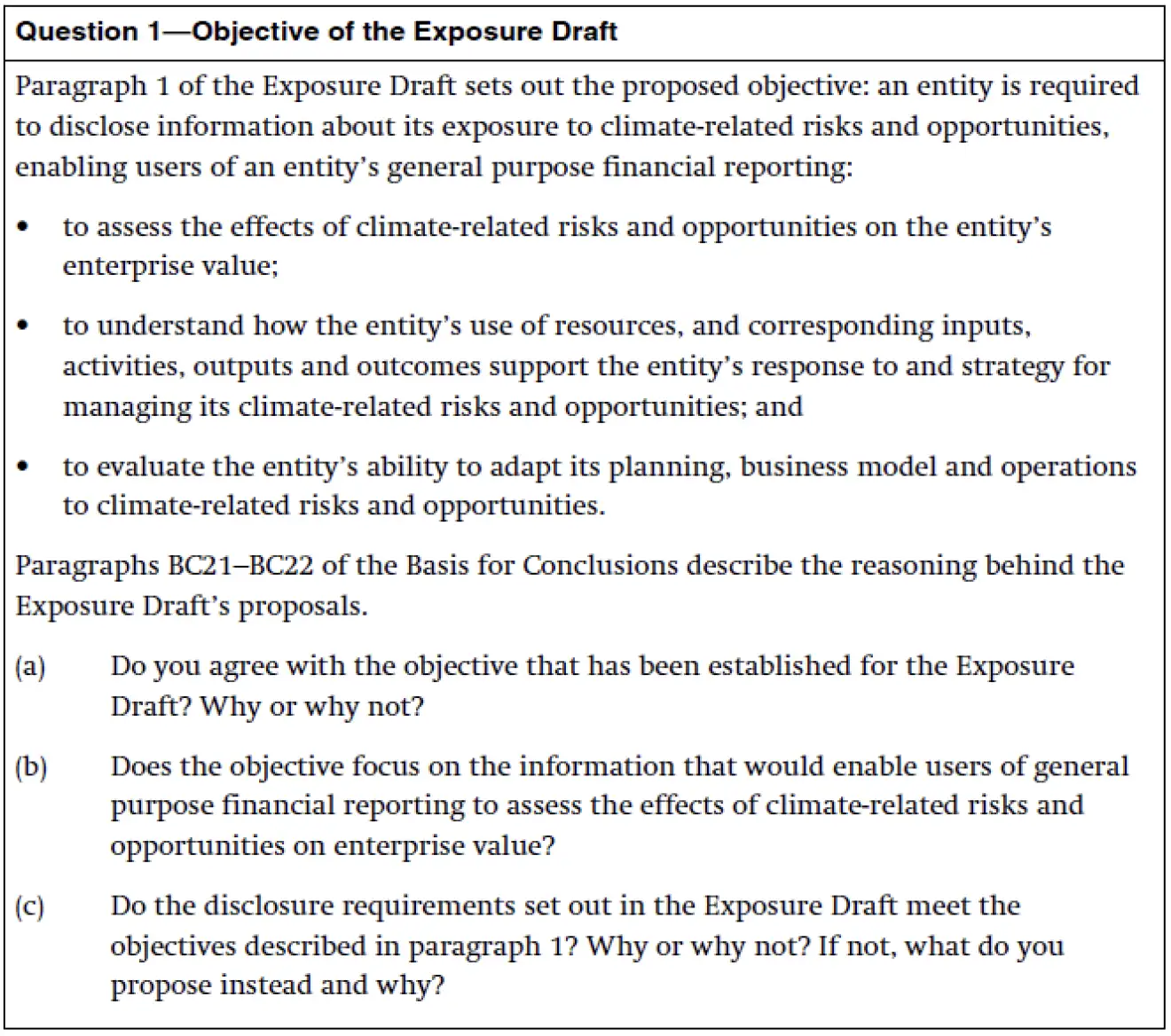
Visual Lease Response
VL agrees with the objective of the exposure draft.
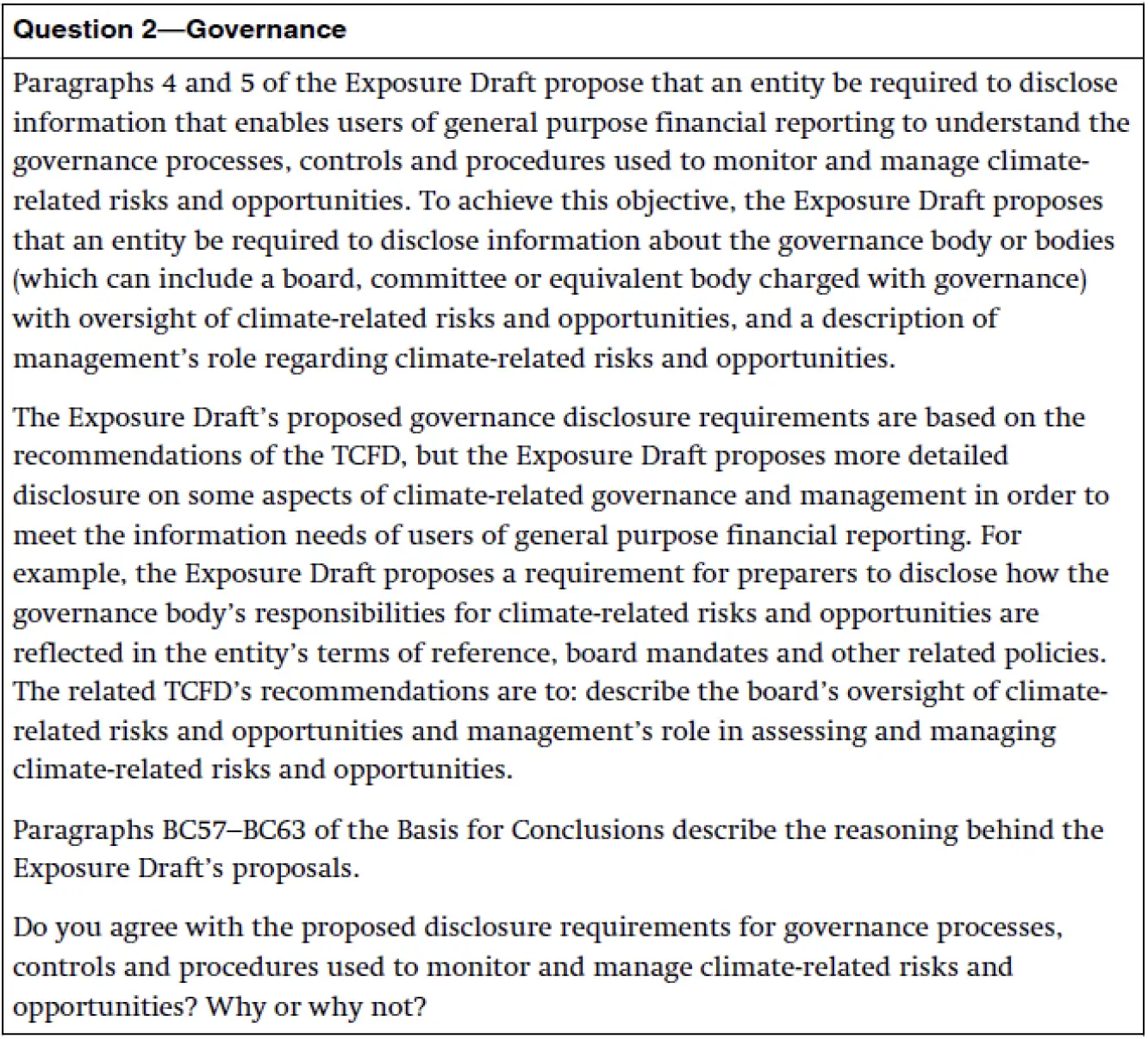
Visual Lease Response
VL agrees with the need for users to understand governance process, controls, and procedures used to monitor and manage climate-related risks and opportunities. However, we find two areas of concern in the guidance as written.
First, we view Exposure Draft S1 and Exposure Draft S2 as complimentary, working hand in hand with each other. Neither will be taken independently of the other. In that vein, the Governance disclosures of S1 can be merely referenced into S2. While they are aligned today, seperately stating them can permit the versions to diverge in the future, which we do not believe to be the intent.
Second, we believe that some of the more detailed disclosure requirements unique to S2 do not add value to users as they do not reflect the structure and workings of governance structures. We find it common for entities to establish governance structures and processes on an integrated basis, not on an individual sustainability theme basis. Therefore, the responsibility to address such sustainability-related risks and opportunities is more often integrated throughout the governance structure, not isolated. Investors, who are users of information, also expect such integrated governance structures to be established and to work effectively. Disclosures should be designed to correspond to such actual practices and information needs.
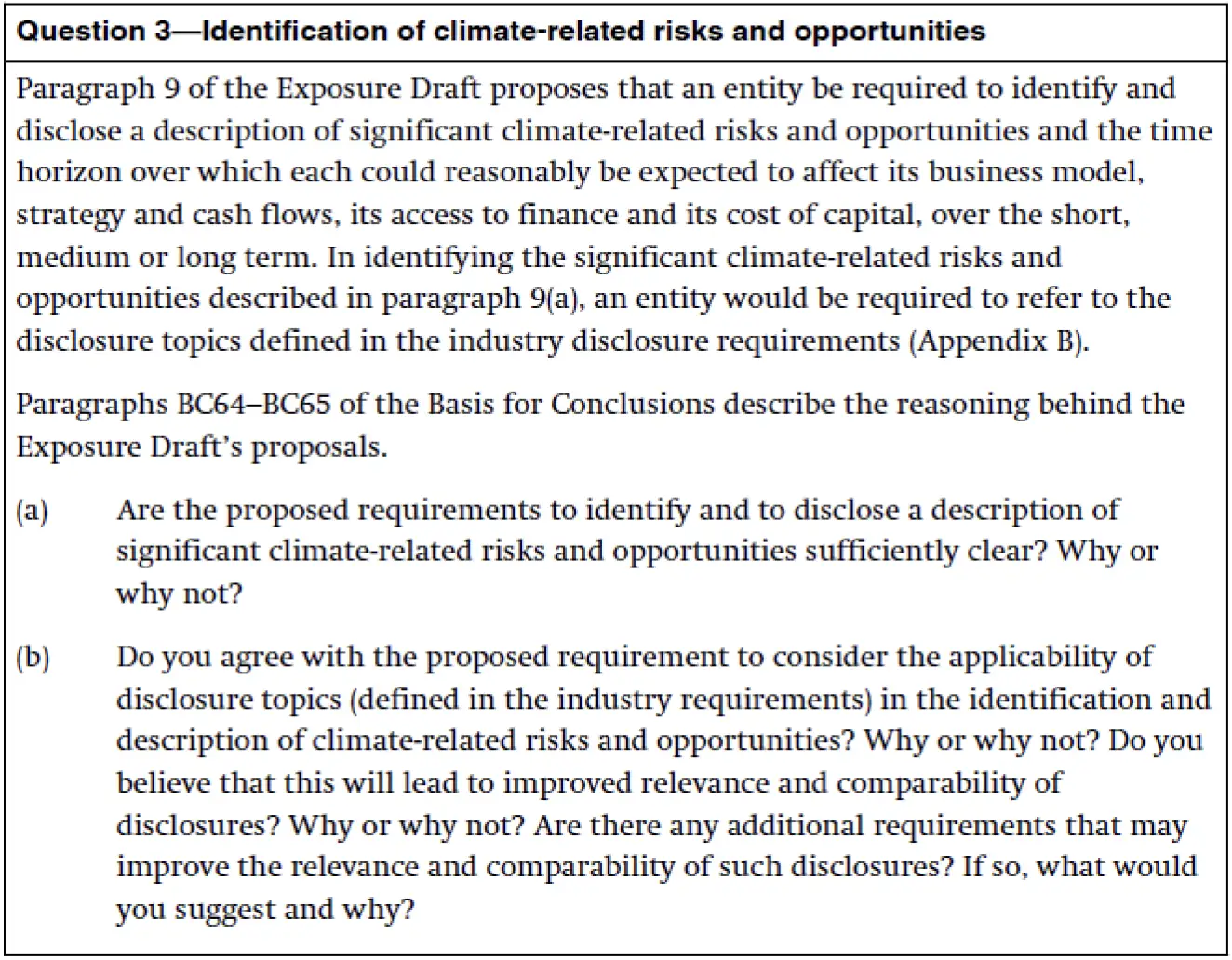
Visual Lease Response
VL understands that while climate-related risk is a global phenomenon, the unique nature of operations will mean every entity will have a unique exposure to risk. Various industries will have risks and opportunities that are both common and unique, so we find the approach outlined in Exhibit B to be appropriate. Ensuring these unique factors are consistently applied across all entities in an industry will ensure users have directly comparable data points.
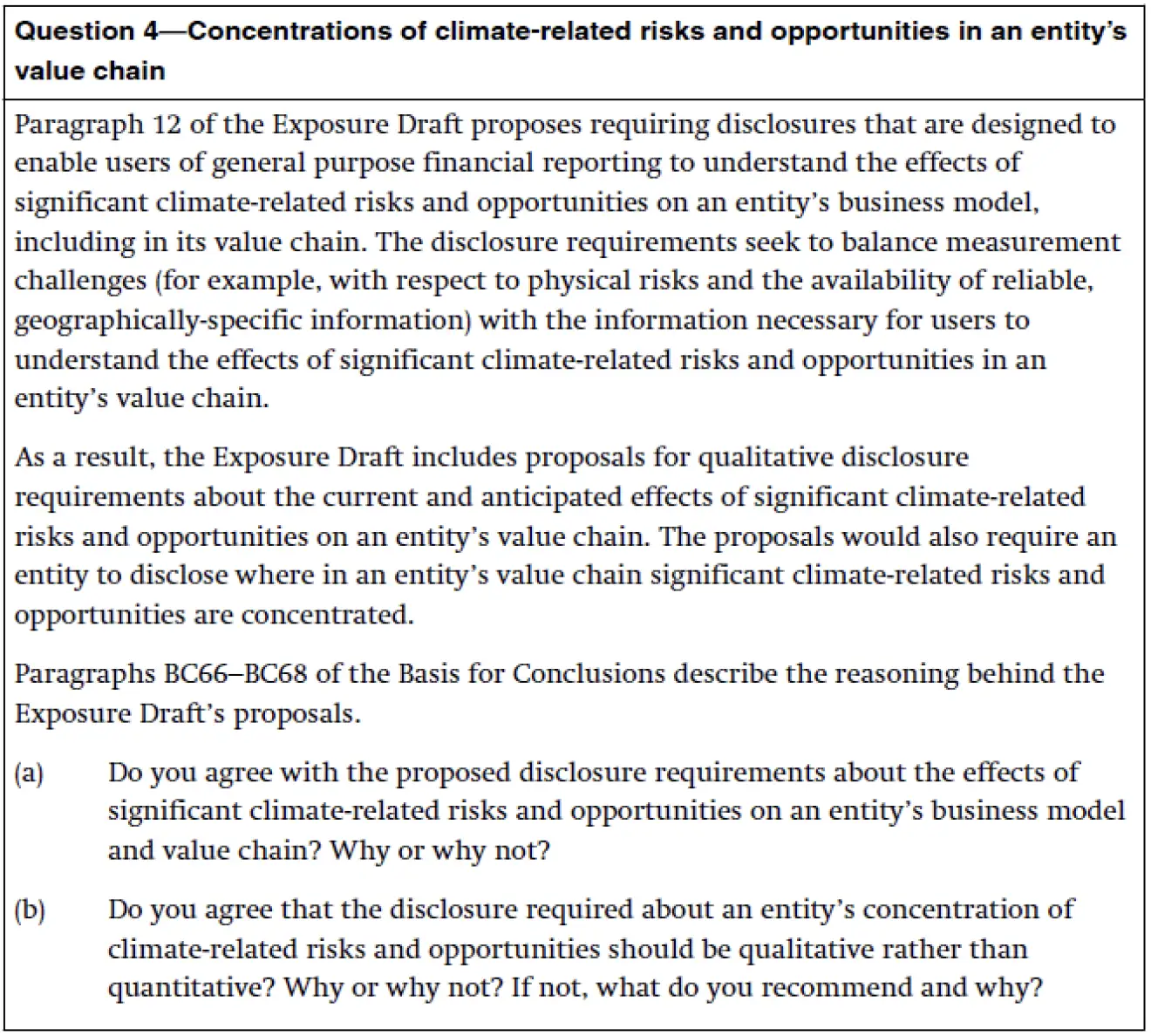
Visual Lease Response
VL agrees that enviornmental-related risks may impact an entity’s business model by an impact on the value chain and not merely on the entity’s direct operations. We support the inclusion of the value chain in disclosure reporting.
Given the additional degrees of separation, however, we agree that disclosing concentration of significant climate-related risks and opportunities in the value chain should be qualitative rather than quantitative. To make such disclosure quantitative would require estimation of the impact on the entities which comprise the value chain. We do not believe the reporting entity would have sufficient data to make those quantitative estimations. The reporting entity would then further have to estimate the share of the supply chain impact borne by them, and then estimate the subsequent impact on their operations. The margin of error in any such estimations makes their value dubious.
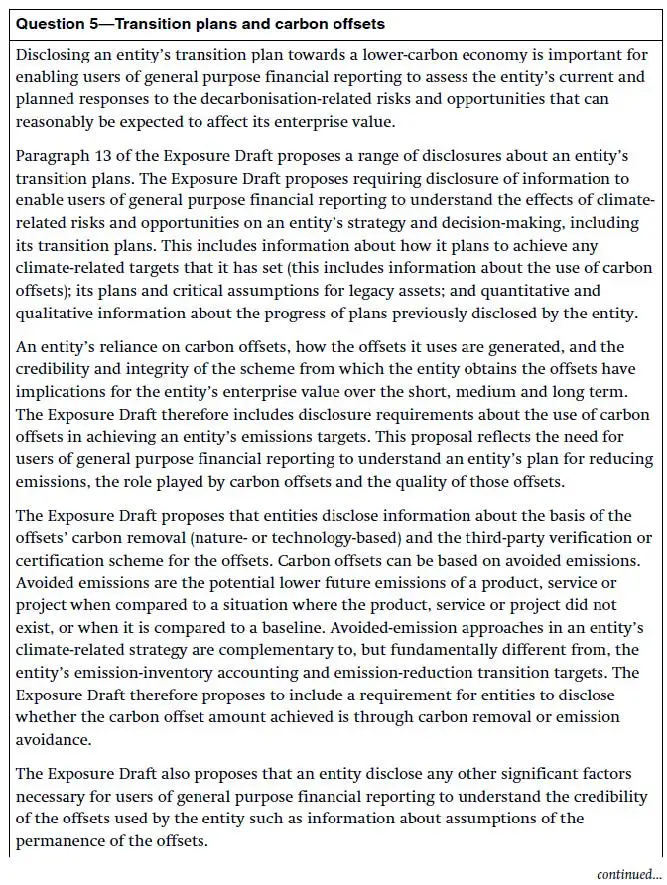
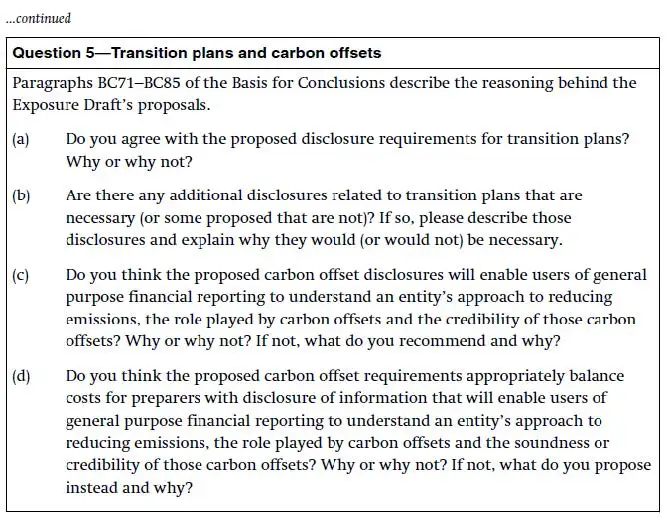
Visual Lease Response
We support the proposed disclosure requirements for transition plans. Transition plans will have more impact on short-term performance than any other disclosure area and is the activity most directly under the control of the entity. Therefore, we believe the resulting disclosure will be of great benefit to users.
VL is also in favor of enhanced disclosure requirements for carbon offsets. The wide range of activities considered to be carbon offsets and the tremendous variation in price per ton of offset raise questions about the validity of certain schemes. We support enhanced disclosure so that the marketplace of users can evaluate their validity.
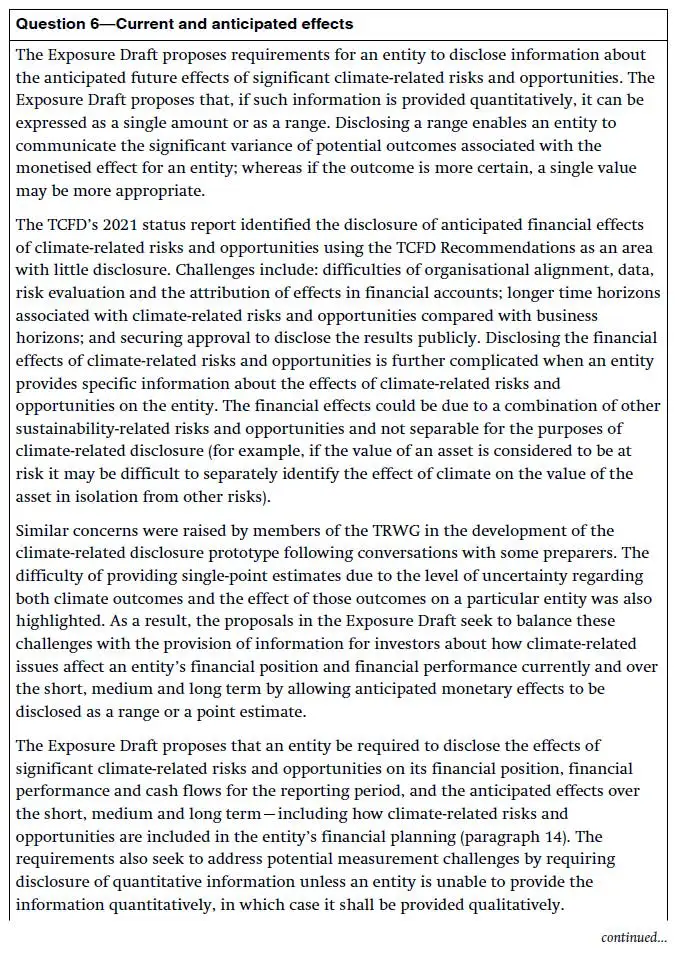
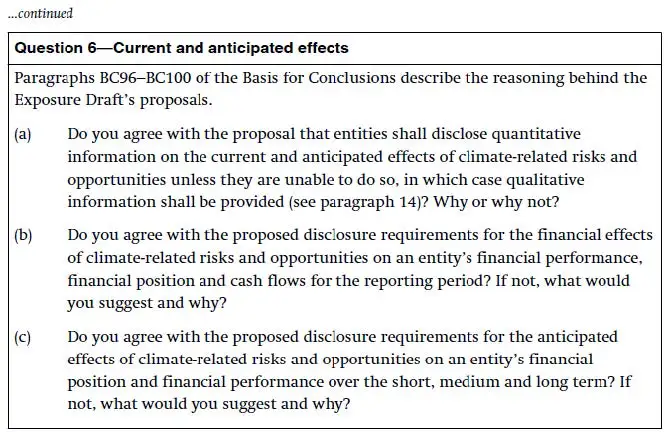
Visual Lease Response
VL generally supports the proposal that entities disclose quantitiative information on effects of climate-related risks. However, as discussed in our response to Question #4, some of the impacts of climate-related risks may not be estimated with a reasonable degree of certainty. Some may not be quantifiable. We believe that a range of quantitative disclosure, with appropriate qualitative supporting data, is the most beneficial package of information for users.
We have further observed that other respondents raise the issue of the impact of baseline year selection on reported data. We have no particular perference on the selection of a baseline year when establishing objectives, goals and transition plans. We would just advise that the baseline year be disclosed, and probably the reason for selecting that particular baseline year (if appropriate).
When disclosing the current and anticipated effects of risks, however, we believe that either the current year or the most recent full year presented to be the most appropriate baseline. Reporting the impact of a hypothetical future event in terms of impact on financial results from 10 years ago is an unnecessary burden on users and will hamper their ability to understand the impact of the risk.
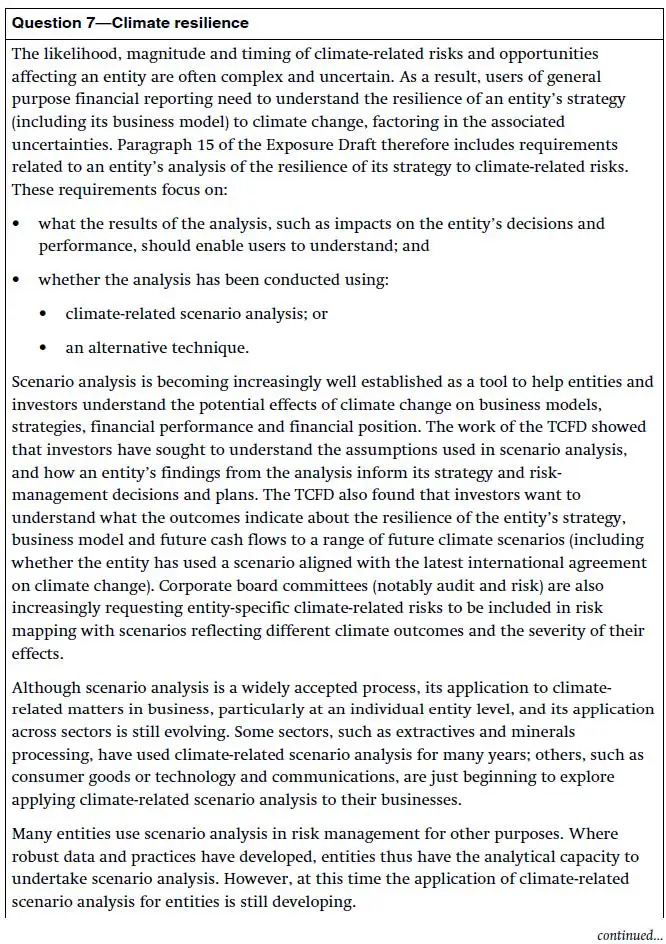
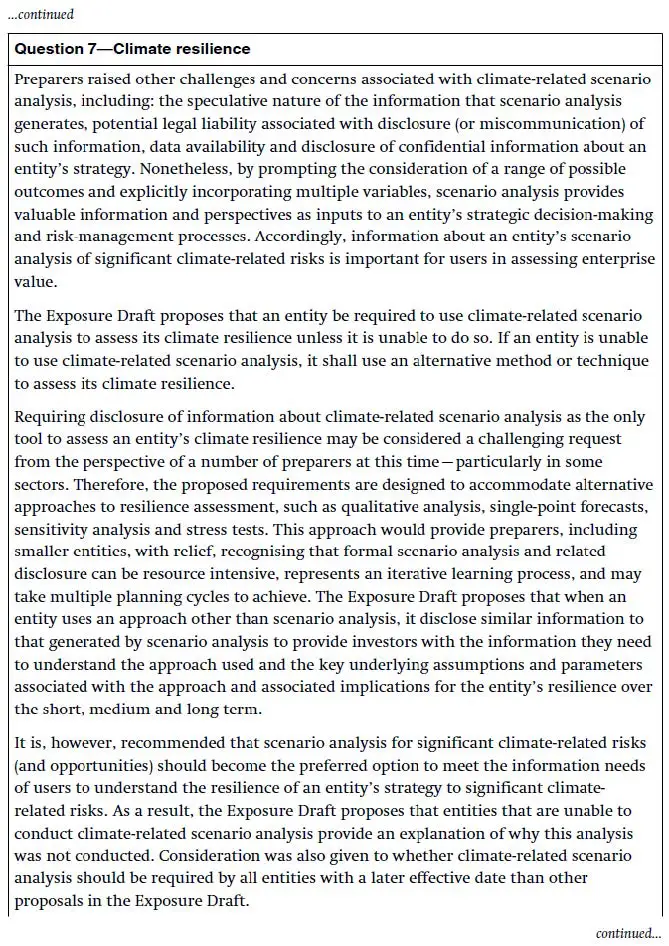
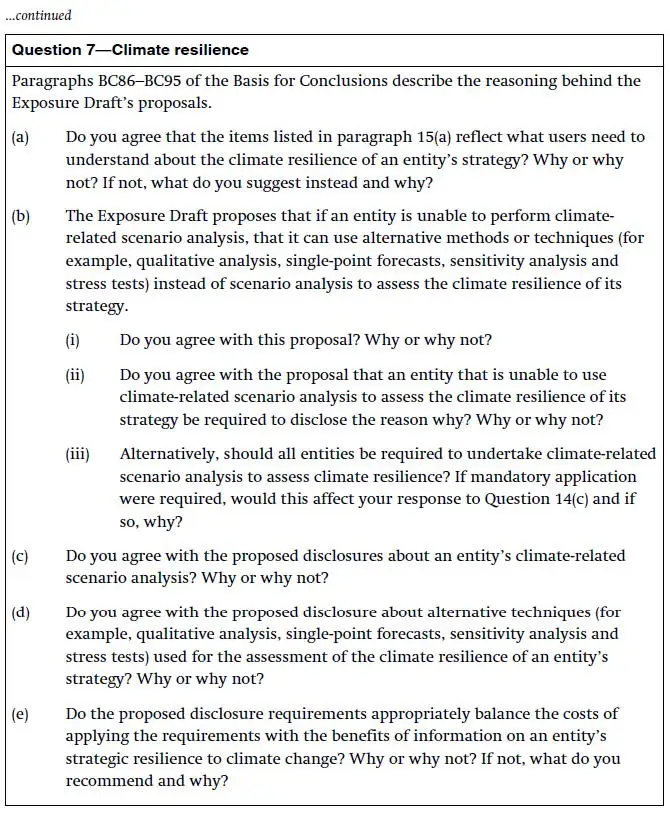
Visual Lease Response
VL is in agreement with each of the components of this question. The wide variety of approaches mentioned in this question indicates that while the issue is not new, there continues to be significant development of knowledge in the field. To best understand the entity- or industry-specific risks, we support the ability to utilize alternative techniques so long as they are adequately disclosed. We have confidence that allowing their use will enhance further development of the technology, and allow the marketplace of users to evaluate their reliability.
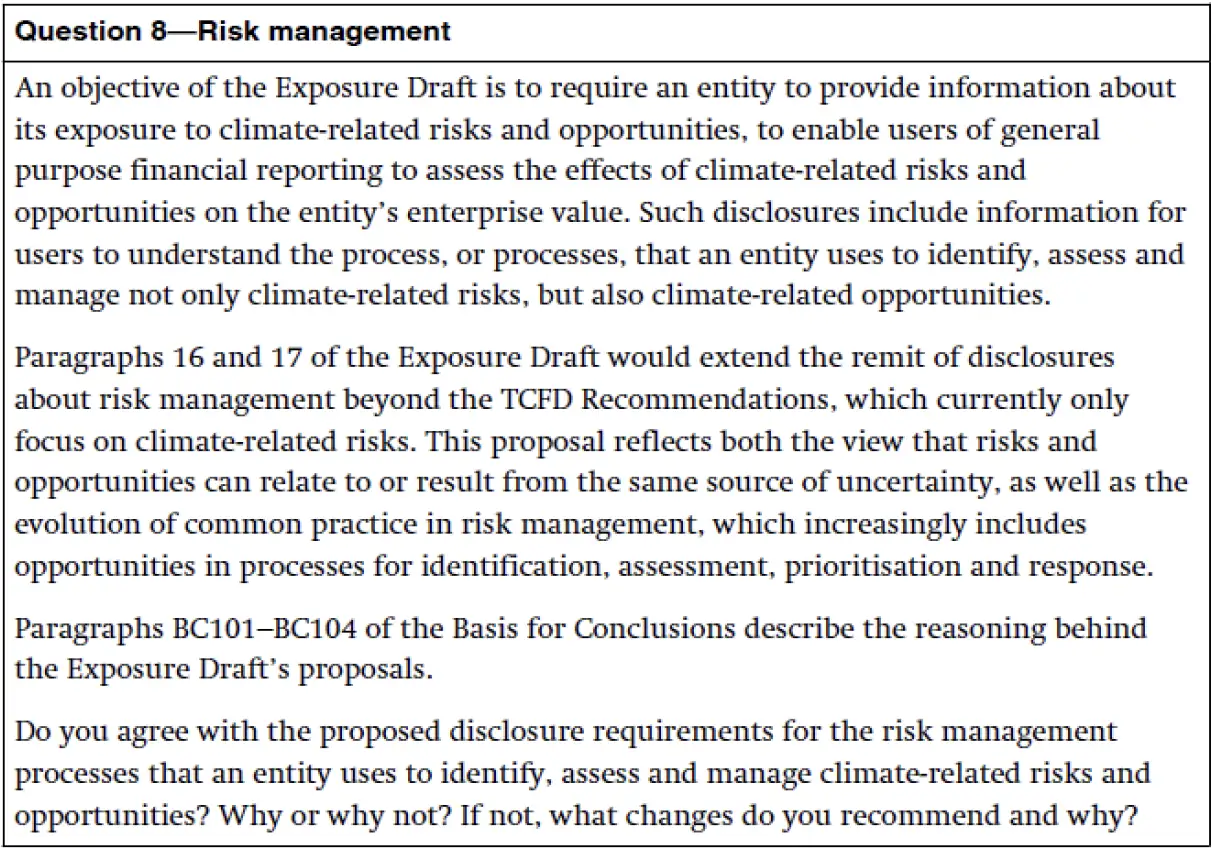
We agree that risk management should be expanded to include both risks and opportunities. In our experience, it is accurate that risks and opportunities can relate to or result from the same source of uncertainty.
We believe that this area is a significant overlap with the Draft S1 requirements: therefore, we suggest affirming alignment between the two standards.
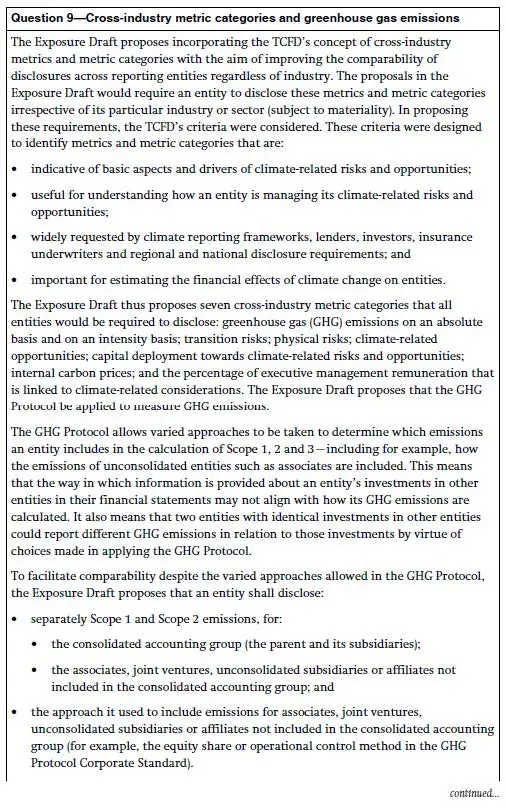
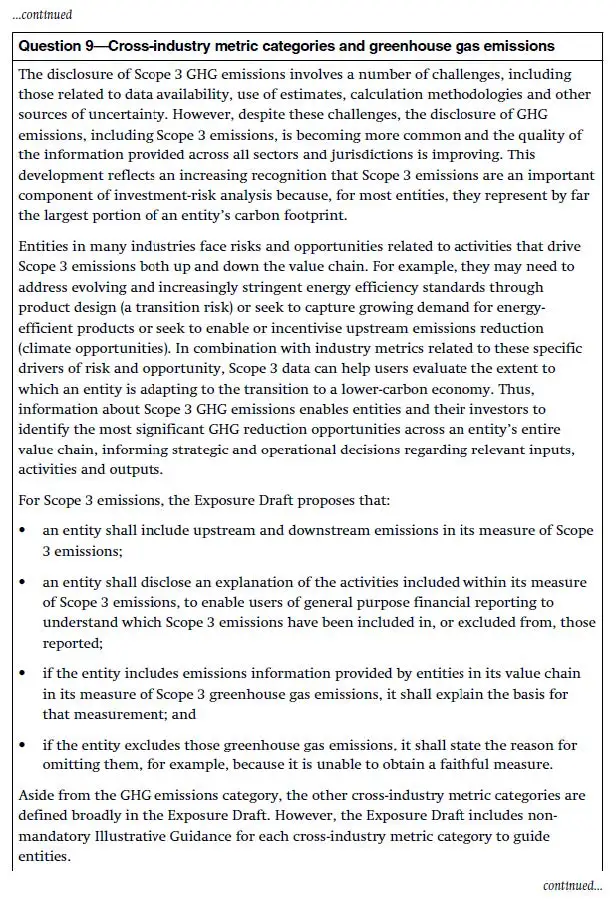
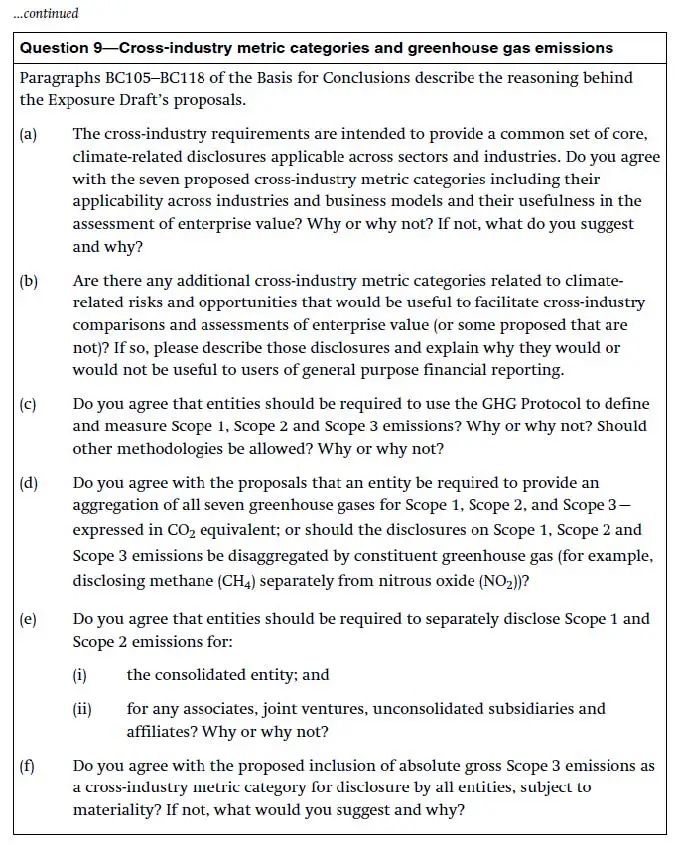
Visual Lease Response
- We agree in general, with some reservations. As regards disclosure of GHG emissions, we fully support the disclosure of Scope 1 and 2 emissions. Given their nature, Scope 3 emissions cannot be estimated with the same level of certainty. We believe that the additional provisions attaching to Scope 3 reporting are beneficial, but would support additional refinement to ensure emissions are not overreported or underreported. While we see clear benefits to identifying risk assessments and opportunities, and the associated capital deployment, we do not see the same clarity of purpose to disclosing internal carbon costs and remuneration data. While we believe it may help understand the throught process behind the capital deployment, the actual amounts deployed are the more meaningful data.
- We do not see any additional cross-industry metrics which should be added.
- VL believes the GHG protocol represents the most comprehensive, widely accepted measurement standard for emissions. That said, there is a need for the data to be continuously reviewed and updated. The further one moves from direct measurement of emissions, the greater the potential for error. Scope 3 in particular is often two to three times removed from direct measurement, and subject to local variations. We recommend the process of the GHG protocal be utilized, but the local values should be substituted is more current and/or more relevant.
- We support the disclosure of Scope 1 and Scope 2 emissions in all cases. Given the uncertainty involved with Scope 3 emissions, and the additional cost inherent with gathering data, we believe it may be appropriate to phase in Scope 3 reporting requirements. We do support the inclusion of Scope 3 emissions if these are included in other reporting under this standard. We have no clear preference for reporting disaggregated emissions versus a single CO2e value.
- We agree with the requirement to report Scope 1 and Scope 2 emissions for the consolidated entity distinct from associations, joint ventures, etc. The consolidated entry reporting would be relatively straightforward. The GHG protocol addresses the issue with joint ventures, etc. in their principle of equity share, financial control or operational control. We support the IFRS decision to align with these principles.
- If Scope 3 emissions are to be included in reporting, we support their inclusion as an absolute gross amount. We further support the application of materiality to disclosure of Scope 3 emissions.
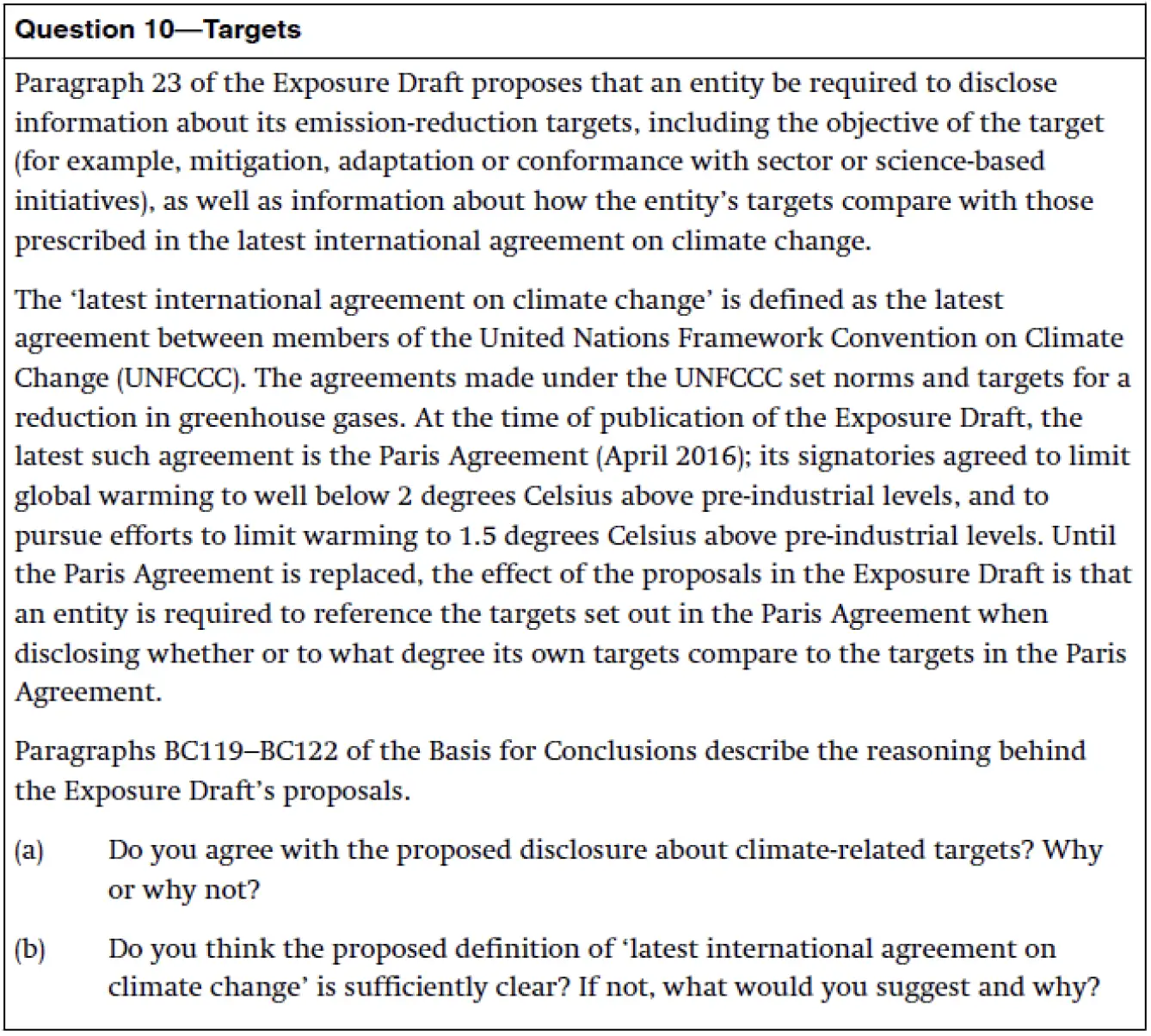
Visual Lease Response
VL agrees that the definition of “latest international agreement on climate change” is sufficiently clear. With that understanding, we agree with the proposed disclosure about climate-related targets. We believe that users compare the company-specific targets versus the agreement targets to assess the sufficiency of the target, then compare actual results against the target to assess performance.
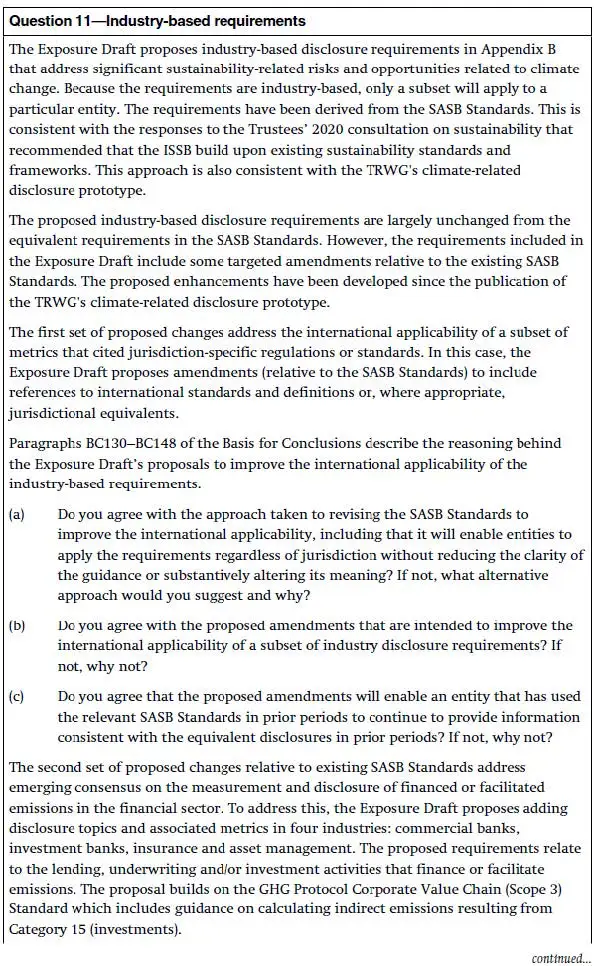
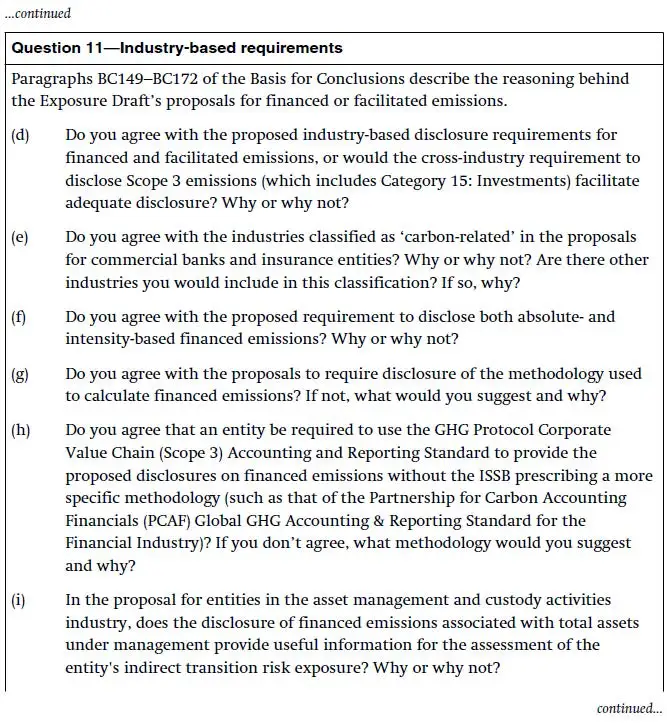
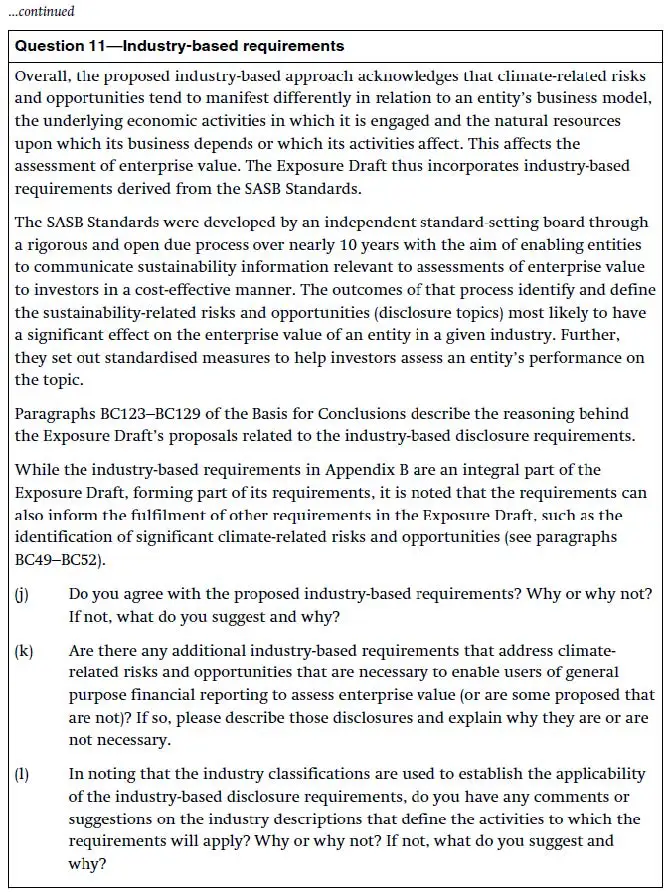
Visual Lease Response
Regarding items (a) through (c), we agree with the approach to revising the SASB standards to enhance their international applicablity. We are indifferent to the three revision approaches; in fact we believe the facts associated with each standard may mean that different approaches are best suited to different standards. We only suggest that the revisions are perfomed with an eye to keeping the standard as constant as possible, so that an entity that has used the relevant SASB Standards in prior periods may continue to provide information consistent with the equivalent disclosures in prior periods.
As regards iems (d) through (i), VL is not sufficiently knowledgeable about the proposed revisions to the existing SASB Standards address emerging consensus on the measurement and disclosure of financed or facilitated emissions in the financial sector to offer an opinion on the matter. We can only comment that the concept of “financed emissions” and “facilitated emissions” seems markedly different that the Scope 3 emissions associated with other industries.
As regards the industry-based disclosure, requirements items (j) through (l), we fully support the approach of standards which reflect the unique attributes of different industries. Beyond that, we have no comments on any specific industry requirements.
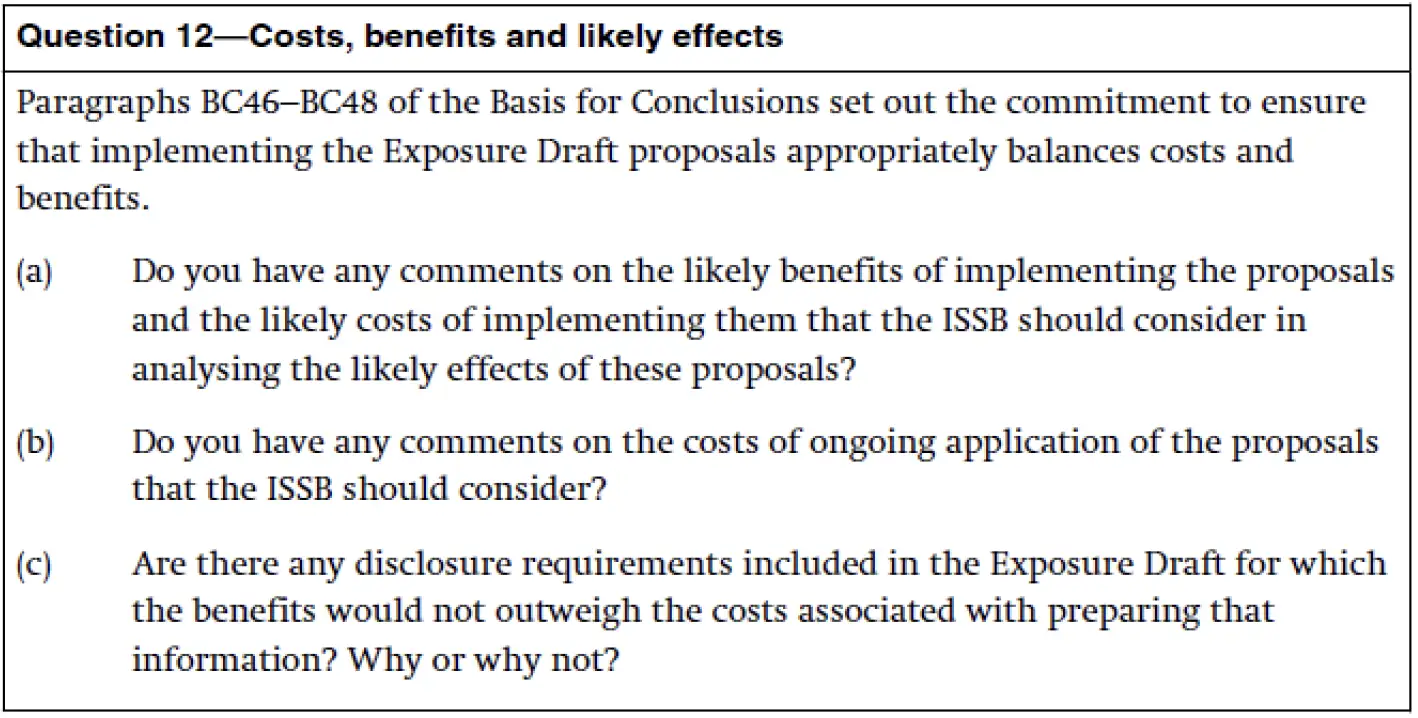
Visual Lease Response
As a developer of a software solution for the various updated lease accounting standards globally adopted, we do not have direct insight into the expected costs of complying with the proposed environmental disclosure proposals. However, we believe the complexity of the proposed standards is an important parallel to the lease accounting standards. The rules are complex and pervasive, which will require entities to dedicate significant resources to compliance. Excel spreadsheets will be difficult to manage and will create opportunities for error to occur. Development of software to aid in tracking and disclosure will be an important condition for ensuring timely and accurate data presentation to users.
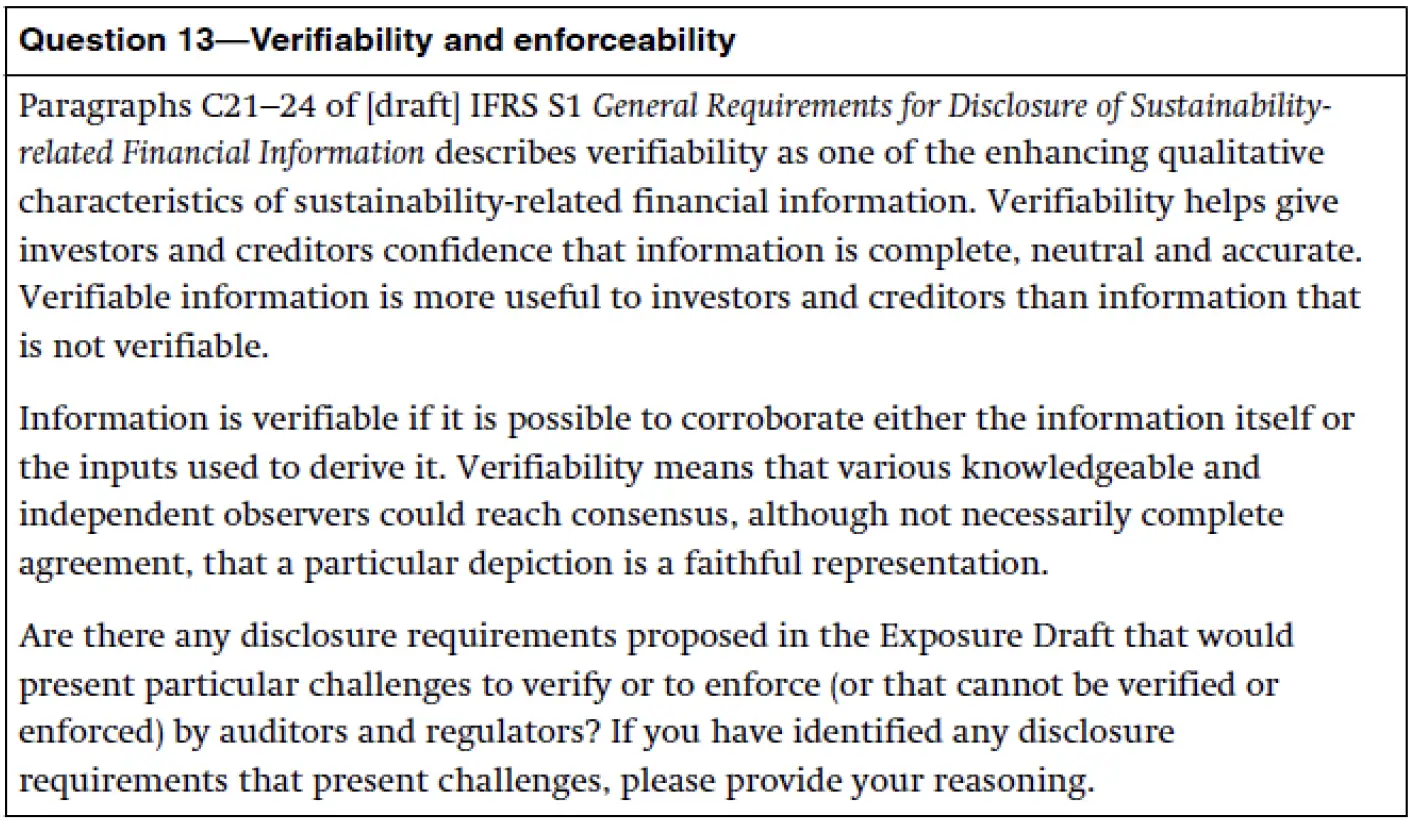
Visual Lease Response
Due to the breadth and variety of data encompassed by these standards, we feel it best to approach the issue of verifiability based on the nature of the data.
Reporting Scope 1 and Scope 2 emissions are relatively straightforward and as such can be stringently verified. While greenhouse gas emissions are not directly measured, the source of the emissions can be directly measured, and the relationship to emissions is well established.
Scope 3 emissions are indirectly measured. The relationship between the input measure and output emissions estimates can be validated, but validation of the input measure is a greater challenge.
Other items in the standard move even further from direct measure. Estimating the financial impact to the entity of a hypothetical event impacting the entity’s value chain constitutes several degrees of separation. It becomes difficult to validate anything other than the internal mathematics of the modeling. In this instance, the standard would have to be reasonableness instead of accuracy. We believe that more detail about verification and enforcability is necessary.
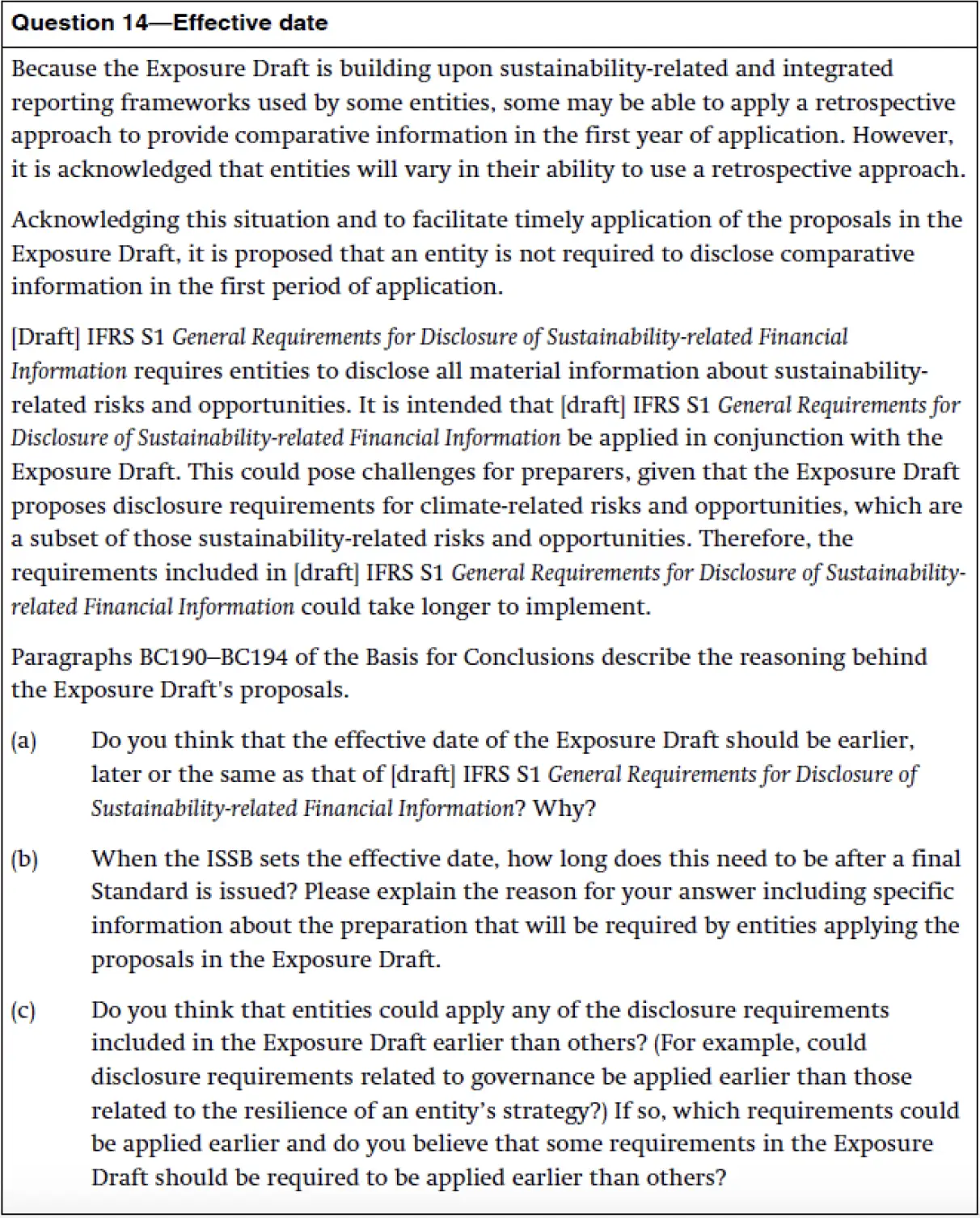
Visual Lease Response
Visual Lease recognizes that adoption is a complex issue with no simple answer. We can look to our experience of adapting software for the new Lease Accounting requirements (IFRS 16, ASC 842) for some guidance. The changes to lease
accounting were mere adjustments compared to the scope of Draft S1, and approximately three years passed between adoption and the effective date.
On the other hand, we also recognize the rush in many jurisdictions to pass some sort of standard. We support the ISSB taking a leadership role in this issue, and so we do not suggest taking a longer approach. However, a phased implementation may be preferable. For instance, capturing and reporting Scope 1 and Scope 2 Greenhouse Gas Emissions is a relatively straightforward exercise and could be implemented sooner. Understanding the proper horizon for Scope 3 issues is a challenge of its own, much less estimating those emissions. The effective date should be later. Estimating the financial statement impact of hyppothetical environmental events requires extensive modeling, and therefore might best be phased in over time. In any event, we would certainly support a provision to permit early adoption of the standards.
We would encourage the ISSB to leave open the possibility for individual jurisdictions to use an adoption waterfall, where the largest entities would adopt first, followed by successively smaller entites. By this method, the entities with the most resources to apply to the efforts can model and test the standards. The lessons learned from their implementation would then lessen the expense on smaller enterprises who are less able to bear the cost.
We further support proposed relief from disclosing comparatives in the first year of application. We are concerned that entities might or delay adoption until at least two years of reliable information is available. We support adoption in the first year reliable information is available. However, if an entity has made prior disclosures we support using that information as comparative. If the prior disclosures do not comply with the new standards, we believe the comparison would still benefit users if the different methodologies are adequately explained.
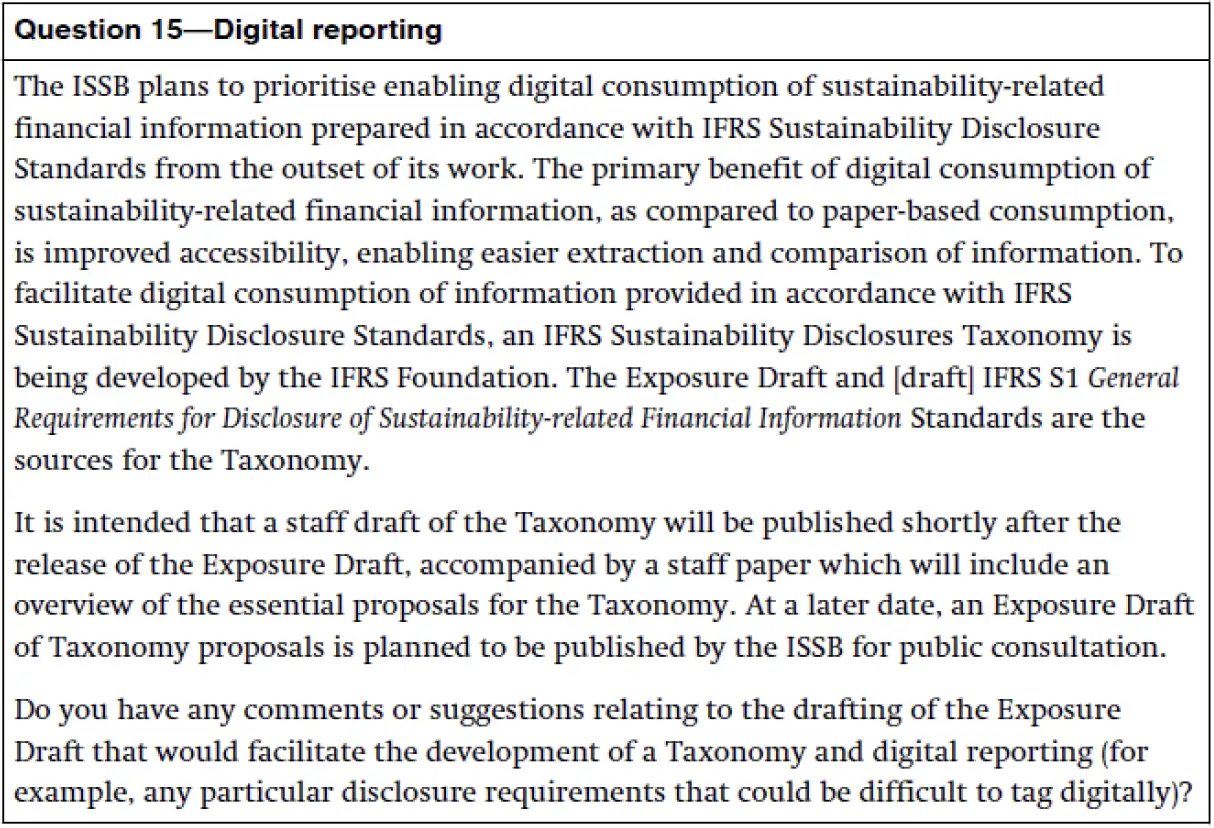
Visual Lease Response
We only suggest the approach to digital reporting be consistent with the current approach to financial reporting.
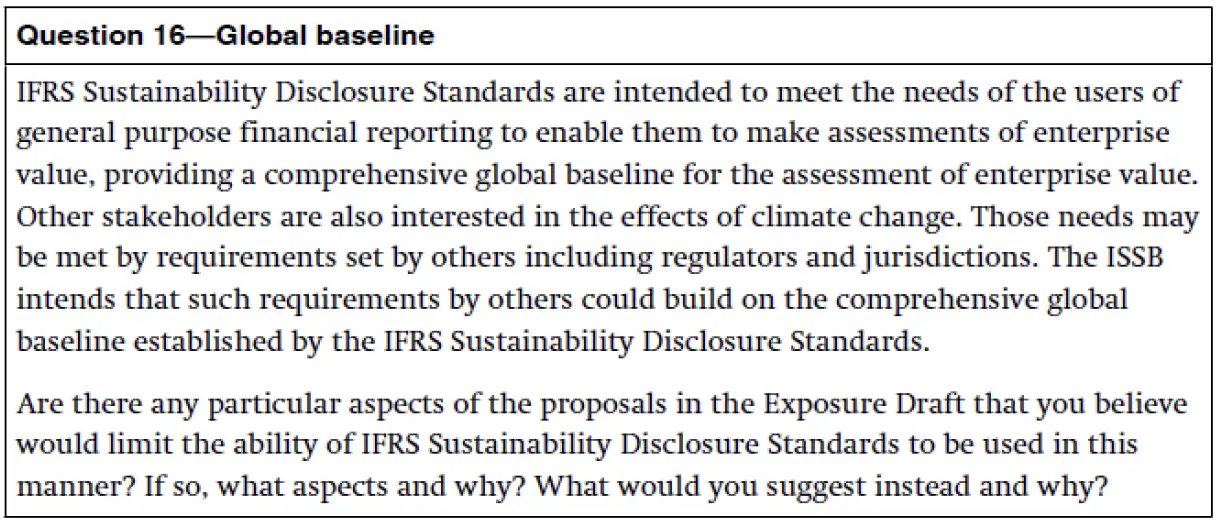
Visual Lease Response
Visual Lease supports initiatives to establish globally consistent sustainability information disclosures. Environmental issues are truly global issues, and require a consistent application across all borders.
As stated in our response to Question 13, we believe timing is probably the most important consideration that could limit the ability of Draft S1 to be used as a global baseline. The last standard to the playing field cannot become the baseline. For that reason we support a quick but measured path to an effective date.
VL believes a building block approach is best suited to achieving this global baseline standard. First make effective those parts of the standard which are easiest to implement. Add the levels of complexity as we go along. We contend that this accretive approach is the most effective way to make this standard the global baseline.

Visual Lease Response
Visual Lease has no further comments.
Respectfully Submitted,
Joseph Fitzgerald
Senior Vice President, Lease Market Strategy
Visual Lease
William Harter
Principal Solutions Advisor
Visual Lease























